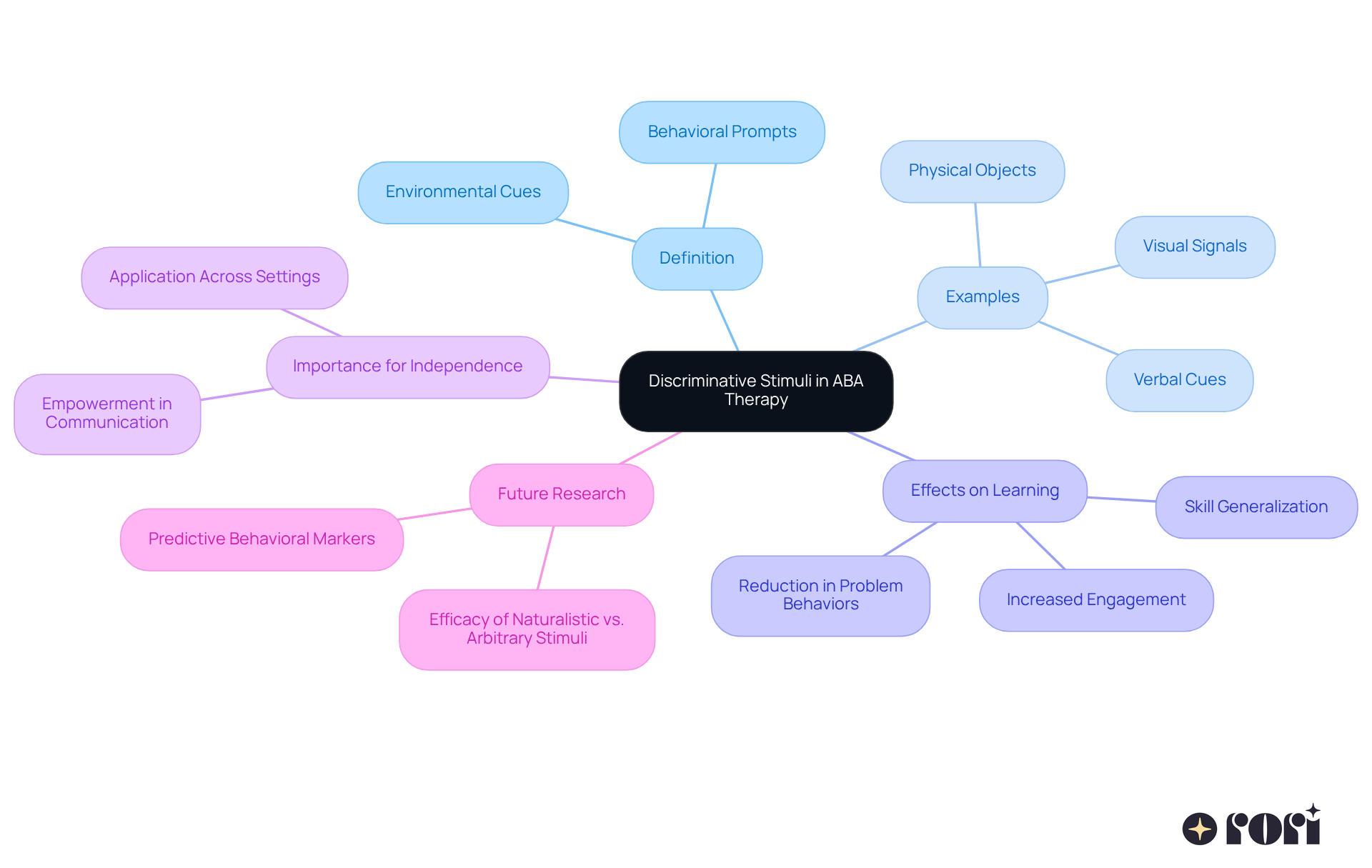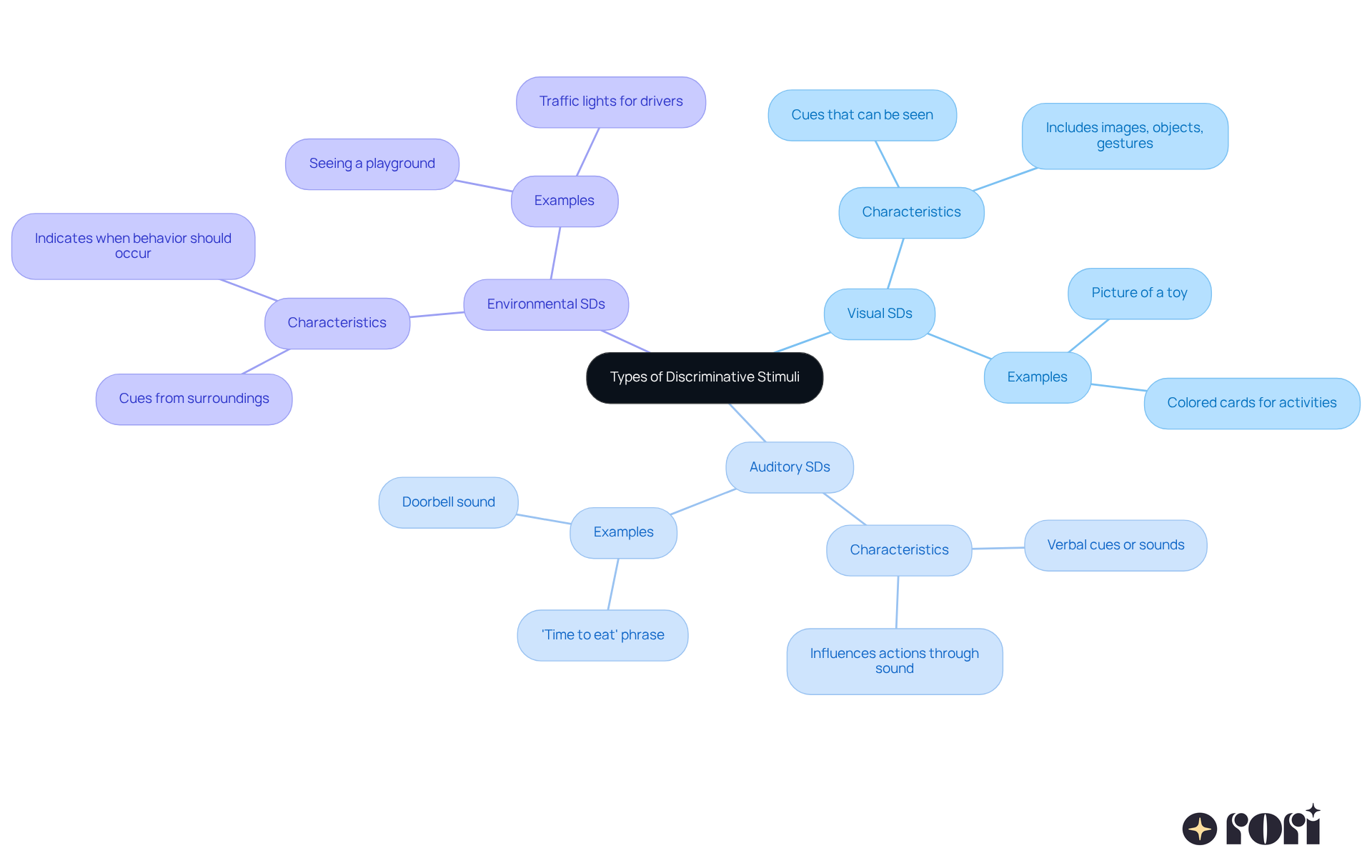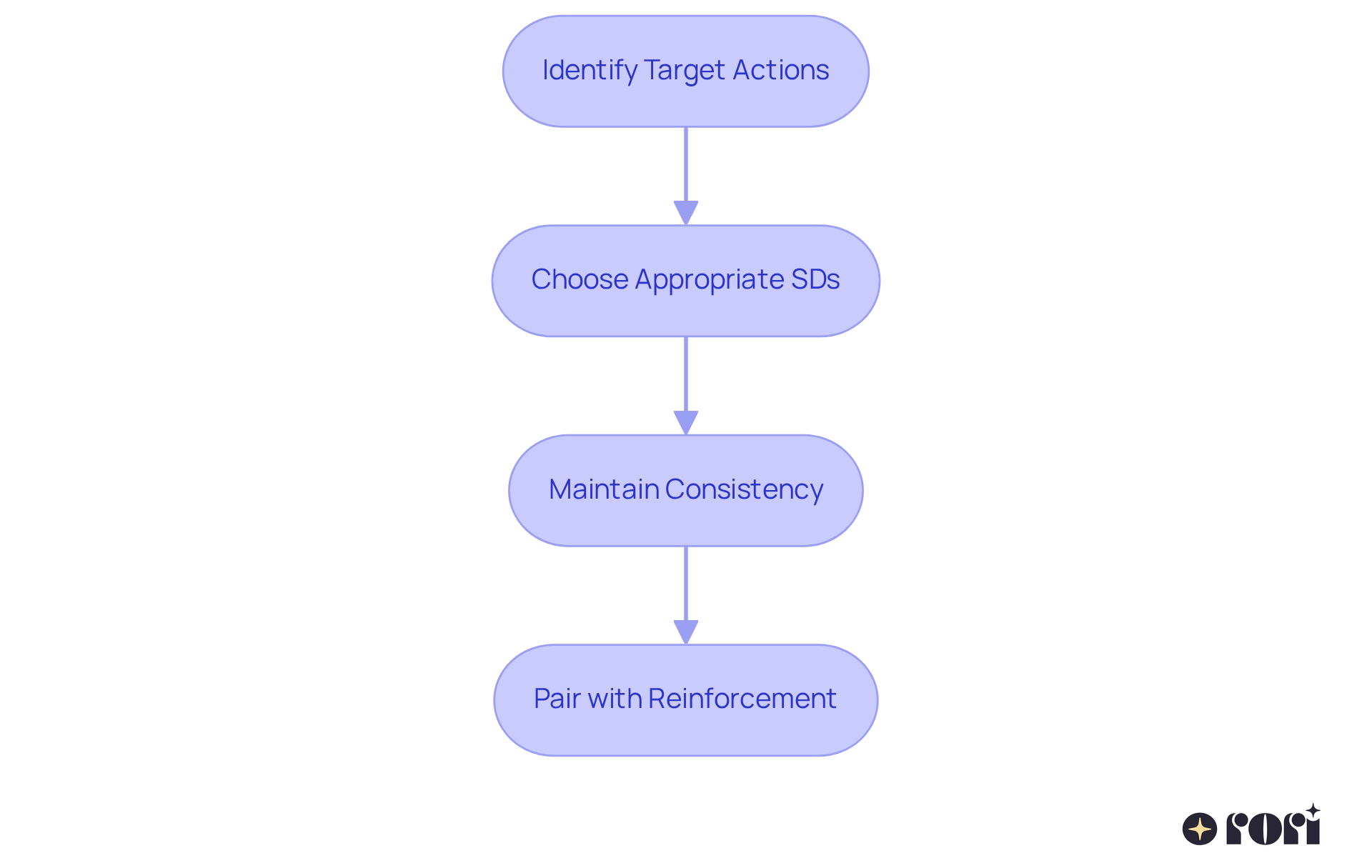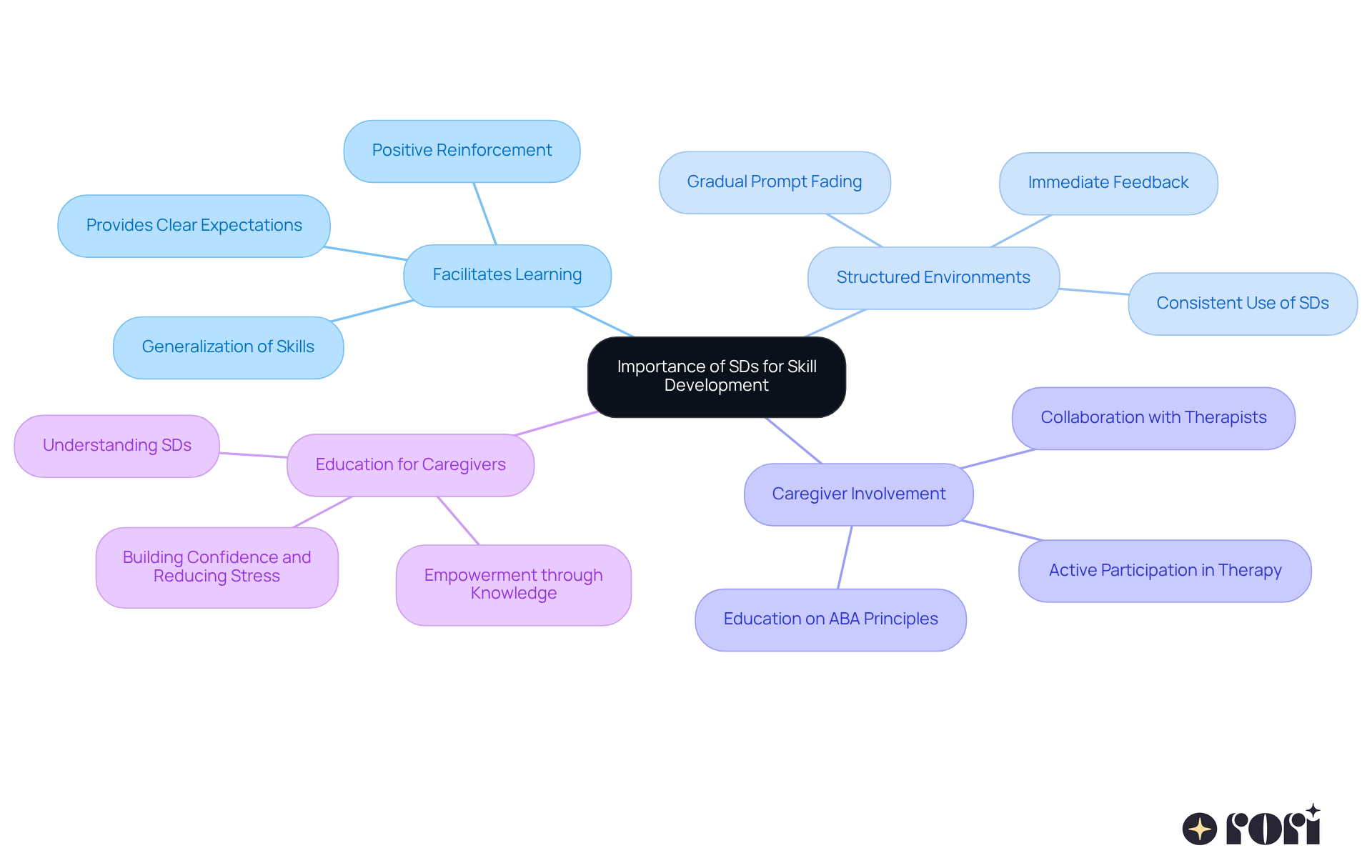This article explores how parents can enhance their children's learning by effectively using discriminative stimuli (SDs) in Applied Behavior Analysis (ABA) therapy. By identifying specific actions and choosing the right cues, parents can set the stage for success. Maintaining consistency and pairing these cues with positive reinforcement helps create a structured environment that fosters skill development and independence in children.
Let’s dive into this together! Imagine a scenario where your child learns best when given clear cues. By recognizing what works and sticking with it, you’re not just guiding them—you’re building their confidence! It’s all about creating those moments that make learning feel natural and enjoyable.
Remember, you’re not alone in this journey. Many parents face similar challenges, and sharing experiences can be incredibly helpful. So, let’s keep the conversation going! Feel free to share your thoughts or ask questions. We’re here to help you every step of the way!
Understanding the nuances of Applied Behavior Analysis (ABA) can truly be a game-changer for parents eager to support their children's learning journey. Discriminative stimuli (SDs) are vital cues that not only guide behavior but also enhance communication and independence in children with autism. As parents navigate the complexities of ABA, they might find themselves wondering: how can they effectively implement these strategies in daily life to foster meaningful learning experiences?
This article delves into practical steps parents can take to master SDs, empowering them to create a structured environment that promotes skill development and positive behavior changes. Let’s explore this together! We’re here to help you every step of the way!
Discriminative stimuli (SDs) are those specific environmental cues that tell us when a certain behavior is likely to be rewarded. Think of an SD as a helpful nudge for a young person, letting them know that if they perform a specific action, they might just get that desired outcome or reward. For example, when a little one spots a cookie jar (the SD), they might feel encouraged to ask for a cookie, knowing their request is probably going to be met with a yes! This understanding is super important for parents because it helps create an environment where kids can learn and practice new skills.
Research shows just how effective SDs in ABA can be in boosting learning outcomes for individuals with autism. When these cues are clear and consistent, kids are more likely to engage in the behaviors we want to see, which can lead to fewer problem behaviors overall. For instance, using visual signals, like pictures of things they want, can really help young ones express their needs more effectively.
But the role of SDs goes beyond just immediate learning; they are also key in promoting independence. By teaching kids to recognize and respond to these cues, parents can help them apply their skills across different settings, paving the way for long-term success. Current research backs up the idea that using SDs in ABA effectively can enhance adaptive behaviors and communication skills, highlighting their importance in autism therapy as we look ahead to 2025.
In a nutshell, understanding and using discriminative stimuli is essential for parents who want to enhance their children's learning experience. By creating a structured environment filled with clear signals, parents can empower their kids to learn, communicate, and truly thrive. Let’s explore this together!

Discriminative stimuli (sds aba) come in three primary types, each of which plays a vital role in guiding behavior in children with autism. Let’s break it down together!
Visual SDs are all about what kids can see. These include images, objects, or gestures that indicate a specific action. For instance, showing a picture of a toy can encourage a little one to ask for it, boosting their communication skills.
Then we have Auditory SDs. These are verbal cues or sounds that influence actions. A simple phrase like 'time to eat' can signal to a child that it’s time to come to the table, helping establish routine and structure.
Lastly, there are Environmental SDs. These cues come from the surroundings and indicate when a behavior should happen. For example, seeing a playground can tell a child that it’s time to play, encouraging physical activity and social interaction.
Understanding these types of sds aba helps parents apply them effectively in various situations, thereby enhancing their child’s learning and behavior. By recognizing and using visual, auditory, and environmental signals, caregivers can create a nurturing environment that promotes skill development and independence.
Moreover, effectively using sds aba can lead to long-term success in daily life. Did you know that 90% of young individuals see remarkable progress when recommended hours are fully implemented with active caregiver involvement? This highlights the crucial role parents play in this journey. Their understanding of sds aba principles allows them to make informed choices that positively impact their child’s growth.
So, let’s explore this together! By engaging with these strategies, you can make a real difference in your child’s life. We’re here to help you every step of the way!

To effectively implement discriminative stimuli (SDs) in daily life, parents can follow these practical steps:
Identify Target Actions: Start by figuring out which specific actions you want to encourage in your child, like asking for help or sharing toys. This clarity will help guide your approach and align with the individualized planning that’s so important in sds aba therapy.
Choose Appropriate SDs: Next, select clear and specific cues that signal the desired action. For instance, using a visual prompt, like a picture of a toy, can motivate your little one to ask for it, making the expectation crystal clear. This method reflects the evidence-based strategies used in effective sds aba behavioral programs.
Maintain Consistency: Consistency is key when it comes to reinforcing learning. Use the same SDs each time to create a dependable learning environment. If you choose a specific phrase or gesture, stick with it whenever the situation arises. Research shows that prompt reinforcement, particularly sds aba, significantly boosts skill development and encourages preferred actions, which is vital for achieving measurable goals in your child’s growth.
Pair with Reinforcement: Always follow up the desired action with positive reinforcement, like praise or a small reward. This strengthens the connection between the behavior and the SDS ABA, helping your child understand how their actions lead to results. Your active participation in this process not only enhances behavioral outcomes but also empowers you as a caregiver, enhancing your ability to support your child's development.
By following these steps, parents can create a structured and nurturing environment that fosters learning and encourages positive behaviors in their children. This ultimately leads to better outcomes through informed decision-making and alignment with therapeutic strategies. Let’s explore this together!

Sds aba are essential for helping youth develop skills in ABA therapy! They clarify what actions are expected in different situations, making it easier for kids to generalize their skills. For example, when a child learns to say 'please' while asking for a toy, the toy acts as the SD, indicating that this action will lead to a positive outcome—getting the toy. Isn’t it amazing that research shows positive SDs, like using a 'silly voice,' can achieve a remarkable maintenance rate of 100%? This really highlights how effective they are at reinforcing desired actions.
By consistently using SDs in daily routines, parents can create a structured learning environment that not only promotes independence but also encourages positive change. Evidence supports that prompt input from therapists can strengthen good habits and help correct negative ones, leading to significant progress toward long-term goals. Plus, gradual prompt fading techniques—like slowly reducing the intensity or frequency of prompts—motivate children to act on their own.
Caregivers can discover effective SDs by working together with therapists, ensuring these cues are specific, clear, and stand out from other stimuli. For instance, saying 'clean your hands' as an SD signals that compliance will likely earn praise or a treat, reinforcing the desired behavior. Immediate feedback from therapists highlights the importance of timely reinforcement in learning. By actively participating in this process, parents can help their children generalize learned skills to new situations, ultimately supporting their growth and success.
Moreover, educating caregivers is vital in this journey. When caregivers understand ABA principles and strategies better, they feel empowered to make informed choices that positively impact their children’s progress. This knowledge boosts their confidence, reduces stress, and enhances family dynamics, leading to better behavioral outcomes. Personalized plans crafted by skilled analysts are also key to addressing each individual’s unique needs in ABA therapy. By mastering how to effectively use sds aba, caregivers can enhance their child’s learning experience and promote lasting behavioral improvements. Let’s explore this together!

Understanding and effectively utilizing discriminative stimuli (SDs) in ABA therapy is crucial for parents who want to enhance their children's learning experiences. By recognizing these environmental cues, caregivers can create a supportive atmosphere that encourages desired behaviors and fosters independence. This foundational knowledge empowers parents to take active roles in their children's development, leading to improved communication and adaptive skills.
Throughout this article, we’ve shared key insights on the types of SDs—like visual, auditory, and environmental—and how they can be applied in daily life. We outlined practical steps, including:
Each of these strategies plays a significant role in creating a structured learning environment that not only promotes skill development but also contributes to long-term success.
The importance of SDs goes beyond immediate learning; they are essential tools for instilling independence and confidence in children. By actively engaging with these strategies and collaborating with therapists, parents can make informed choices that significantly impact their child's growth. Embracing the principles of ABA and mastering the use of discriminative stimuli can lead to profound improvements in behavior and overall quality of life. Let’s take action today to pave the way for a brighter future for our children and their families!
What are discriminative stimuli (SDs) in ABA therapy?
Discriminative stimuli (SDs) are specific environmental cues that indicate when a certain behavior is likely to be rewarded, helping individuals understand when to perform a specific action to achieve a desired outcome.
How do SDs help children, particularly those with autism?
SDs boost learning outcomes by providing clear and consistent cues, which encourage children to engage in desired behaviors and reduce problem behaviors. They also aid in effective communication, such as using visual signals to express needs.
What is an example of a discriminative stimulus?
An example of an SD is a child spotting a cookie jar, which encourages them to ask for a cookie, knowing their request is likely to be fulfilled.
Why are SDs important for promoting independence in children?
Teaching children to recognize and respond to SDs helps them apply their skills in various settings, fostering independence and long-term success.
What does current research say about the effectiveness of SDs in ABA therapy?
Research indicates that using SDs effectively enhances adaptive behaviors and communication skills in individuals with autism, emphasizing their significance in autism therapy as we approach 2025.
How can parents create an environment that utilizes SDs?
Parents can create a structured environment filled with clear signals, such as visual cues, to empower their children to learn, communicate, and thrive.